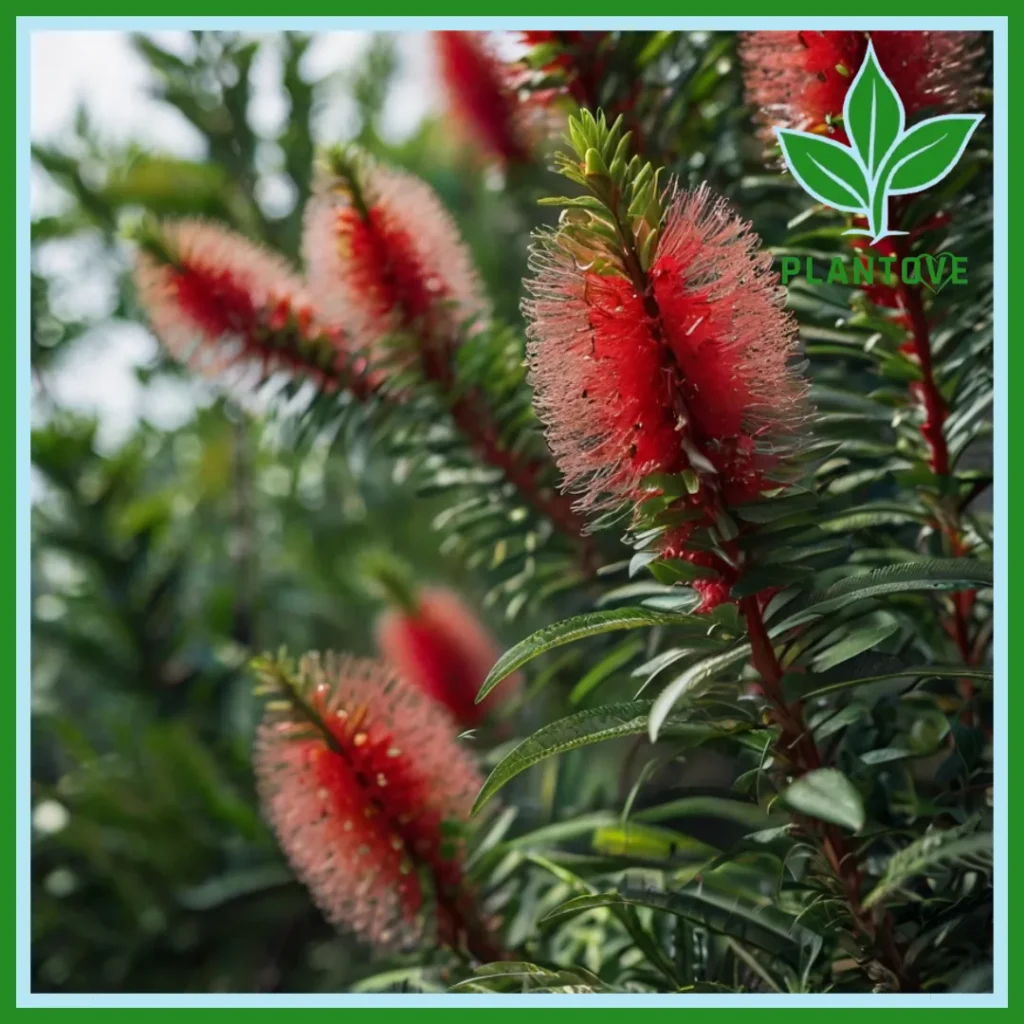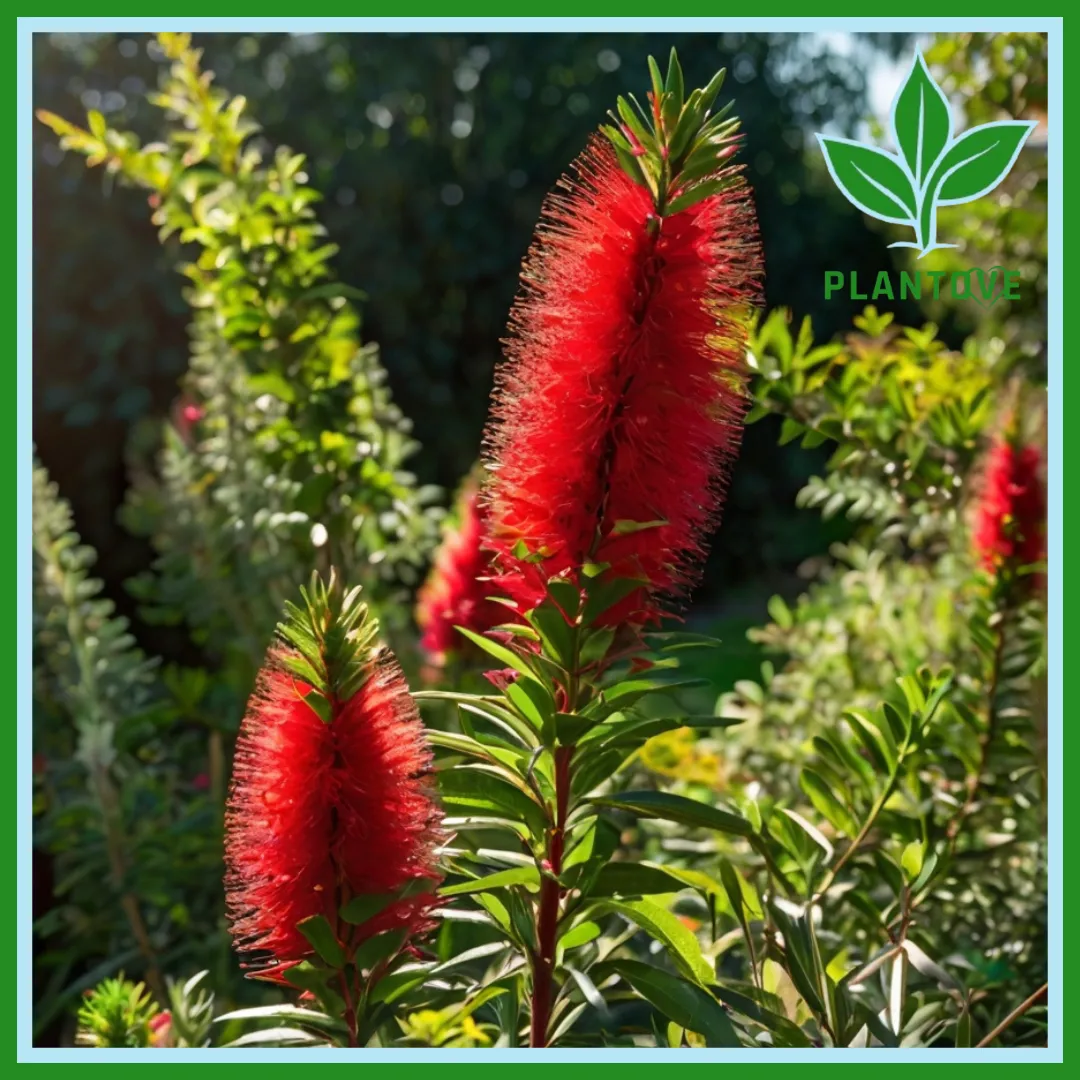The bottle brush plant (Callistemon) is a strikingly unique addition to any garden or landscape. Named for its distinct cylindrical flowers that resemble a traditional bottle brush, this plant is both attractive and functional. Native to Australia, the bottle brush plant has gained popularity worldwide due to its vivid blooms, versatility, and ability to attract pollinators such as bees and hummingbirds. In this guide, we’ll explore everything you need to know about the bottle brush plant, including its benefits, care, flowering season, and how to propagate it from cuttings.
What Is the Bottle Brush Plant?
The bottle brush plant belongs to the Callistemon genus, a group of shrubs and small trees known for their vibrant, bottle-brush-shaped flowers. These plants are evergreen and thrive in warm climates, making them a popular choice for gardeners in regions with mild winters and hot summers. The flowers of the bottle brush plant are typically bright red, although some species produce pink, purple, yellow, or white blooms.
Bottle Brush Plant Benefits

One of the key reasons for the popularity of the bottle brush plant is its numerous benefits. Here are some of the top advantages of having this plant in your garden:
1. Pollinator Attraction
The vibrant red flowers of the bottle brush plant are particularly attractive to bees, butterflies, and hummingbirds. The plant’s long flowering season provides a reliable food source for pollinators, making it an excellent choice for gardens that aim to support local wildlife.
2. Ornamental Value
The bottle brush plant is an eye-catching addition to any garden or landscape. Its unique flowers add a splash of color and texture to outdoor spaces, while its evergreen foliage ensures year-round greenery.
3. Low Maintenance
Once established, the bottle brush plant is relatively low-maintenance, requiring minimal watering and care. It is drought-tolerant and can thrive in various soil conditions, making it a versatile option for different environments.
4. Erosion Control
In some regions, the bottle brush plant is used to prevent soil erosion, particularly in areas prone to flooding or water runoff. Its deep root system helps stabilize the soil, making it an environmentally beneficial plant.
5. Windbreak and Privacy Screen
Due to its dense growth habit, the bottle brush plant can be used as a natural windbreak or privacy screen. Its thick foliage offers protection from wind and creates a barrier between different areas of your garden or landscape.
Bottle Brush Plant Care
While the bottle brush plant is relatively easy to care for, proper maintenance is essential for it to thrive and produce abundant blooms. Here are some essential tips for caring for your bottle brush plant.
1. Light Requirements
The bottle brush plant thrives in full sun. It needs at least 6 hours of direct sunlight daily to promote healthy growth and flower production. If planted in too much shade, it may not bloom as profusely and can become leggy.
2. Watering
Although the bottle brush plant is drought-tolerant once established, young plants require regular watering until their root systems are well developed. After the first year, reduce watering to once a week or less, depending on the climate and soil moisture. Be cautious not to overwater, as the plant is susceptible to root rot in poorly drained soil.
3. Soil Conditions
The bottle brush plant prefers well-drained soil but can adapt to various soil types, including sandy or clay-based soils. However, for optimal growth, plant it in slightly acidic to neutral soil with good drainage. Adding compost or organic matter during planting can help improve the soil’s quality.
4. Pruning
Pruning your bottle brush plant is key to maintaining its shape and encouraging new growth. It’s best to prune after flowering, removing any dead or damaged branches. Light pruning can also help improve air circulation within the plant, reducing the risk of fungal infections. Be careful not to over-prune, as this may reduce the next season’s blooms.
5. Fertilizing
While the bottle brush plant does not require heavy fertilizing, an annual application of a balanced, slow-release fertilizer in the spring can help promote healthy growth and flowering. Avoid high-nitrogen fertilizers, as they can encourage excessive foliage growth at the expense of flowers.
When Do Bottle Brush Plants Flower?
The bottle brush plant typically blooms in late spring and early summer, although some species may continue to flower sporadically throughout the year, especially in warmer climates. The timing of the flowers depends on the species, growing conditions, and local climate.
In areas with mild winters, such as in USDA zones 8-11, the bottle brush plant may bloom earlier in the year and have a longer flowering season. In colder regions, the plant may bloom later and have a shorter period of flowering. To extend the bloom time, regular deadheading of spent flowers can encourage the plant to produce more flowers.
Bottle Brush Tree Problems
While the bottle brush plant is generally hardy and resistant to pests, there are a few common problems that gardeners should be aware of.
1. Root Rot
Overwatering or planting in poorly drained soil can lead to root rot, a fungal condition that causes the roots to decay. To prevent root rot, ensure that the plant is not sitting in waterlogged soil and avoid excessive watering.
2. Leaf Spot
Fungal diseases such as leaf spot can affect the bottle brush plant, especially in humid conditions. Signs of leaf spot include brown or black spots on the leaves, which can eventually cause them to drop. Treat leaf spot by improving air circulation around the plant, avoiding overhead watering, and applying fungicides if necessary.
3. Scale Insects
Scale insects can occasionally infest the bottle brush plant, particularly if the plant is stressed due to poor growing conditions. These small, sap-sucking insects attach themselves to the stems and leaves, causing yellowing and wilting. To control scale, prune affected areas and use insecticidal soap or horticultural oils to eliminate the pests.
4. Powdery Mildew
Powdery mildew, a fungal disease that causes a white powdery coating on the leaves, can affect the bottle brush plant in areas with high humidity. To prevent this, ensure the plant has good air circulation and avoid excessive watering. Fungicides may be necessary to control severe outbreaks.
Propagating Bottle Brush Plants from Cuttings
If you want to grow more bottle brush plants, propagating them from cuttings is a straightforward and effective method. Here’s how to do it:
Step 1: Select Healthy Cuttings
In late spring or early summer, choose a healthy stem from your bottle brush plant that is about 4-6 inches long. Make sure the stem is free of flowers and cut just below a leaf node using sharp, clean pruning shears.
Step 2: Prepare the Cuttings
Remove the lower leaves from the stem, leaving only a few at the top. Dip the cut end of the stem in rooting hormone to encourage faster root development.
Step 3: Plant the Cuttings
Fill a small pot with a well-draining potting mix, such as a mixture of sand and perlite. Insert the cutting into the soil, ensuring that the cut end is buried about 2 inches deep. Water the cutting lightly to settle the soil around it.
Step 4: Provide Proper Conditions
Place the pot in a warm, bright location with indirect sunlight. Keep the soil consistently moist but not waterlogged. Covering the pot with a plastic bag or a propagation dome can help retain humidity and speed up the rooting process.
Step 5: Monitor and Transplant
After a few weeks, check for root development by gently tugging on the cutting. Once the roots are established, you can transplant the cutting into a larger pot or directly into the garden.
Conclusion: A Versatile and Beautiful Garden Addition
The bottle brush plant is a versatile and attractive addition to any garden. Its bright, brush-like flowers, evergreen foliage, and ability to attract pollinators make it a favorite among gardeners and landscapers alike. With the proper care, you can enjoy the many benefits of this plant, from its stunning blooms to its low-maintenance nature.
By understanding the needs of the bottle brush plant and following simple care guidelines, you can ensure that this unique plant thrives in your garden for years to come. Whether you’re growing it as a decorative focal point, a privacy screen, or a source of food for pollinators, the bottle brush plant is sure to impress with its vibrant beauty and practical benefits.

